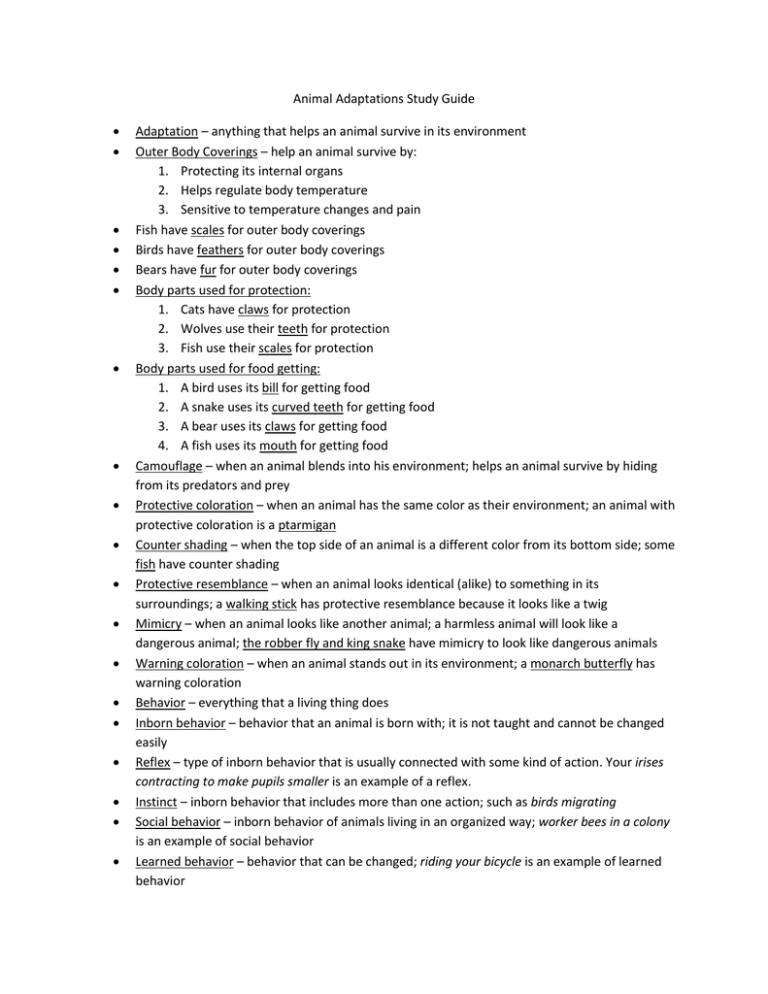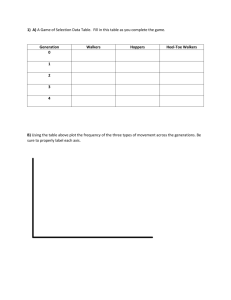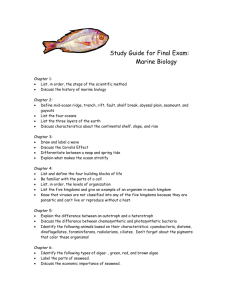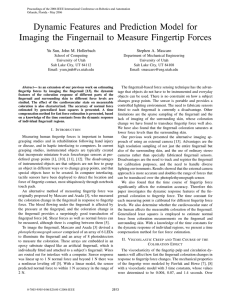Animal Adaptations Study Guide
advertisement

Animal Adaptations Study Guide Adaptation – anything that helps an animal survive in its environment Outer Body Coverings – help an animal survive by: 1. Protecting its internal organs 2. Helps regulate body temperature 3. Sensitive to temperature changes and pain Fish have scales for outer body coverings Birds have feathers for outer body coverings Bears have fur for outer body coverings Body parts used for protection: 1. Cats have claws for protection 2. Wolves use their teeth for protection 3. Fish use their scales for protection Body parts used for food getting: 1. A bird uses its bill for getting food 2. A snake uses its curved teeth for getting food 3. A bear uses its claws for getting food 4. A fish uses its mouth for getting food Camouflage – when an animal blends into his environment; helps an animal survive by hiding from its predators and prey Protective coloration – when an animal has the same color as their environment; an animal with protective coloration is a ptarmigan Counter shading – when the top side of an animal is a different color from its bottom side; some fish have counter shading Protective resemblance – when an animal looks identical (alike) to something in its surroundings; a walking stick has protective resemblance because it looks like a twig Mimicry – when an animal looks like another animal; a harmless animal will look like a dangerous animal; the robber fly and king snake have mimicry to look like dangerous animals Warning coloration – when an animal stands out in its environment; a monarch butterfly has warning coloration Behavior – everything that a living thing does Inborn behavior – behavior that an animal is born with; it is not taught and cannot be changed easily Reflex – type of inborn behavior that is usually connected with some kind of action. Your irises contracting to make pupils smaller is an example of a reflex. Instinct – inborn behavior that includes more than one action; such as birds migrating Social behavior – inborn behavior of animals living in an organized way; worker bees in a colony is an example of social behavior Learned behavior – behavior that can be changed; riding your bicycle is an example of learned behavior




